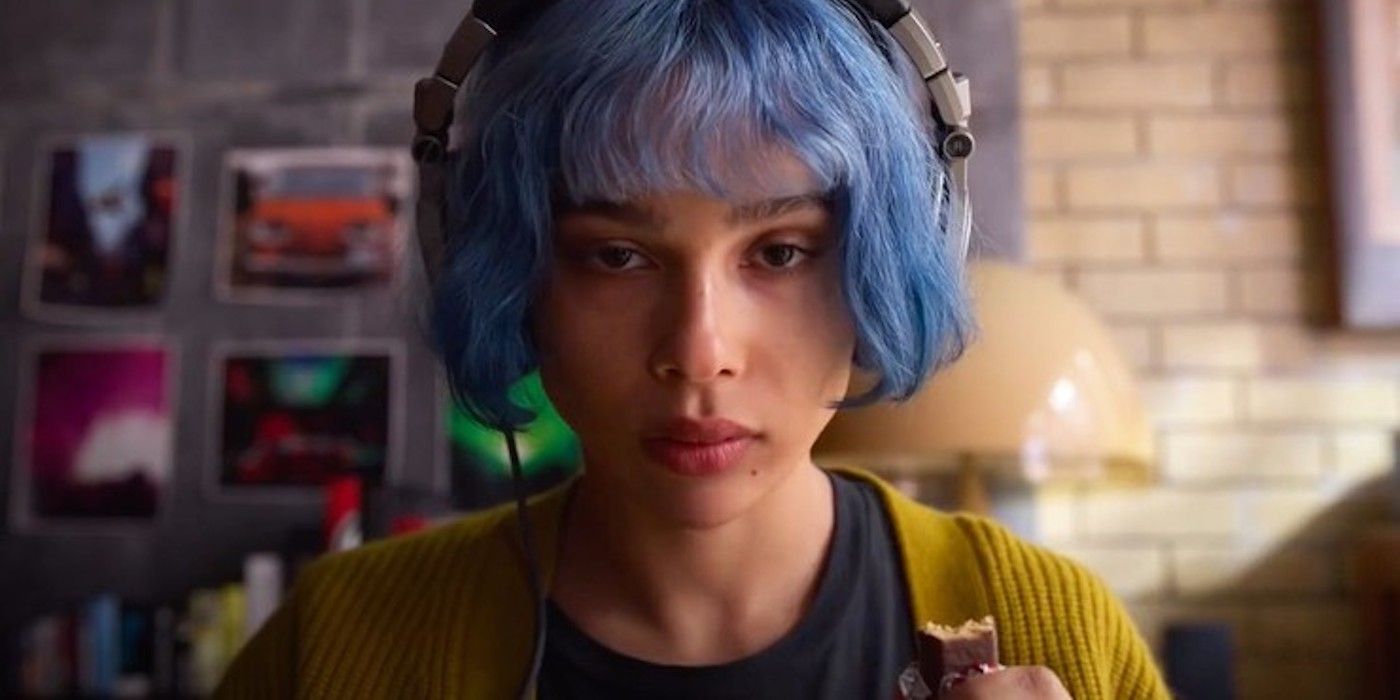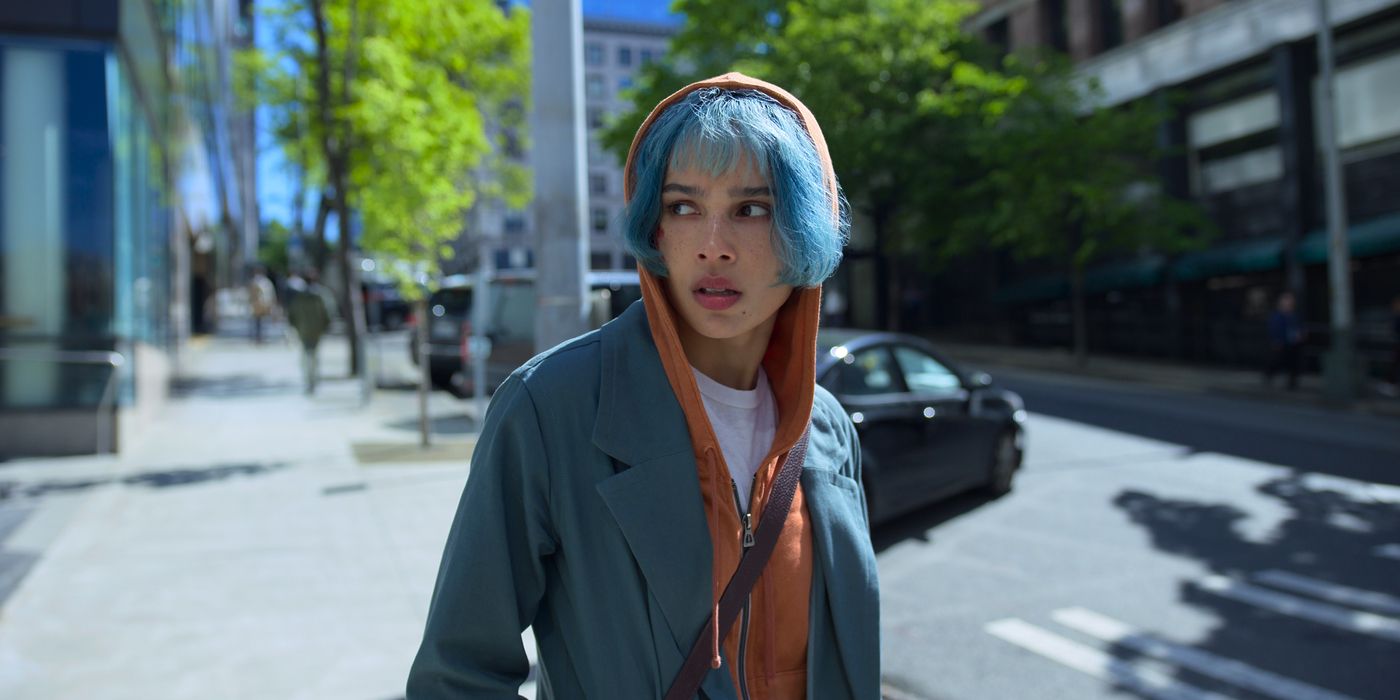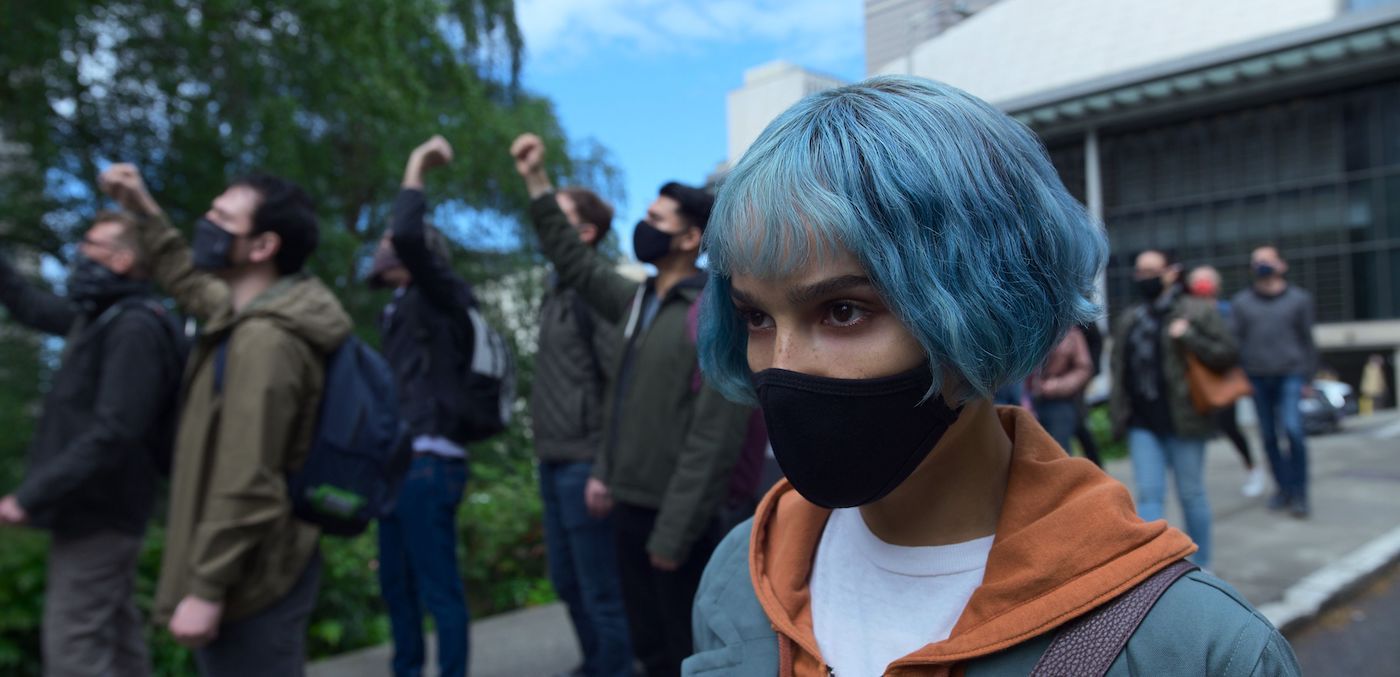The new Seattle-set Steven Soderbergh film KIMI is, like most of the director’s films, many wonderful things all at once. It is a tense thriller that gets you genuinely invested in the story. It is an incisive character study about isolation. It has a strong central performance from Zoë Kravitz who plays an agoraphobic tech worker named Angela who must venture outside in order to bring wrongdoers of the world to justice. It is a film that is both concerned about the power of technology and interested in its potential. It is all of those things and so much more because, in a rarity for most modern films, it was actually filmed where it was set.
If you ever have watched a movie that was set in Seattle and thought, “hmmm that doesn’t really look like the Pacific Northwest city,” you were probably right. It has long been clear to those that live here that most films supposedly shot in the city are actually filmed in nearby Vancouver or a similar stand-in. These places are then disguised to make it seem like they are actually the Emerald City, though most do so poorly. They will often just throw in a disconnected establishing shot of the Space Needle as a recognizable landmark and call it a day, thinking that is enough to convince us of the world of the film. It isn’t.
That is why Soderbergh’s commitment to shooting on location is such a refreshing change of pace for all the texture it brings to the experience. Yes, all of the film’s interior scenes in Angela’s apartment are filmed in Los Angeles. However, the exterior scenes are clearly in Seattle. Shooting on location not only grounds the story in the real place but also adds a sense of depth to the film. Seattle is a worthwhile place to shoot in and not enough films take advantage of exploring it. KIMI shows that more should. When most films are shot in the same places with the same landmarks and familiar settings, it creates a cinematic malaise where everything just is a repeat of something we have already seen.
In KIMI, that is flipped on its head as the tense exterior scenes are the film’s best due to how authentic they all feel. As Angela steps out into the world after spending much of her time inside, it opens up a whole new world of experiences for both the character and the audience. It feels new not just because Soderbergh hasn’t shown us much of what it is around her, but not many other films have either. The only other that has in recent memory was last year’s underrated sci-fi romance Little Fish. That is not saying a whole lot as the most noteworthy part of that film was when it was shot at Gas Works Park for a key scene while the rest fell into old familiar patterns. Still, it showed the value of actually being in the place that the film says you are as it made it feel far more genuine and authentic than most other films do.
KIMI blows any other film of recent memory out of the water in how fully it embraces the nuances of the city. It builds a sense of realism and investment to see Kravitz actually running around the city in real peril in real places as opposed to fictionalized ones standing in for something else. When you see Angela sneak around bus stops to various streets in an attempt to escape pursuers, it captures what it would actually be like if one were running around the city. In one particular scene where she is pulled into a van, the terror of seeing such an abduction is made all the more unsettling because of how your mind recognizes where it happens. You begin to imagine that this could happen to you too.
It isn’t just Seattle, more cities should get more moments to shine in movies. As expressed in the outstanding Every Frame A Painting video essay Vancouver Never Plays Itself, it is disappointing when you never get to see the city and its culture as itself. In Seattle’s case, there are specific things that we miss out on when films aren’t set here. You don’t get to see the specifics of every street, piece of architecture, and the way people move through it. There is something that is lost when a city’s cinematic identity is stripped from it. With KIMI, Soderbergh restores that identity by eschewing the generic trickery common for when films are “set” in Seattle in favor of a more honest portrayal. While it isn’t perfect in how it attempts to portray the real-life protests in the city, there is something to be admired for the attempt.
By actually filming in Seattle, Soderbergh showed that there is a sublime quality to seeing a city with a smaller cinematic footprint get its own presence on screen. It wasn’t just a location that anything could portray, but actually a setting all its own. Even as it is humorous how little it rained despite the production hoping it would in order to capture a specific aesthetic we imagine for Seattle, the fact that it didn’t doesn’t take away from how it showed the city how it is. It captured a specific moment in time that, for that day, meant it wasn’t raining and terror for Angela was found in the brightness of the daylight. The result is a cinematic artifact of where the city was, an experience that is invaluable in preserving the moment in time.
It is probably unlikely that other films will follow suit as Soderbergh is a filmmaker all his own whose commitment to craft generally goes above and beyond. To shoot in Seattle or other underseen locations can often prove difficult. It is easier for another stand-in location to be used as it will fool enough audience members who won’t notice or care anyway. Still, there is a hope that at least a few might. There might be a few who see the value that is gained from actually going into the parts of a city that haven’t been on screen before like this. The details of a place are what make it an interesting experience and there are multiplicities of movies to be made in these locations. All you need to do is look a little bit closer.



